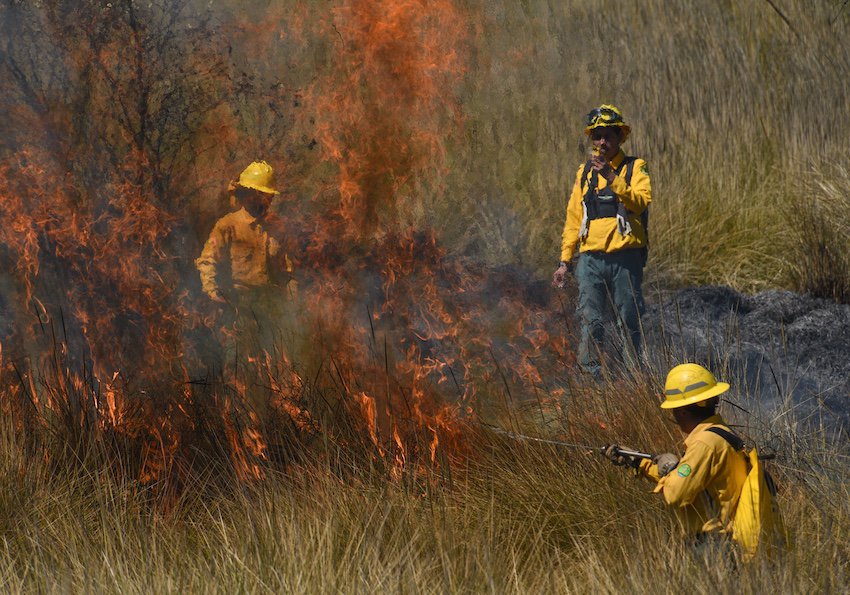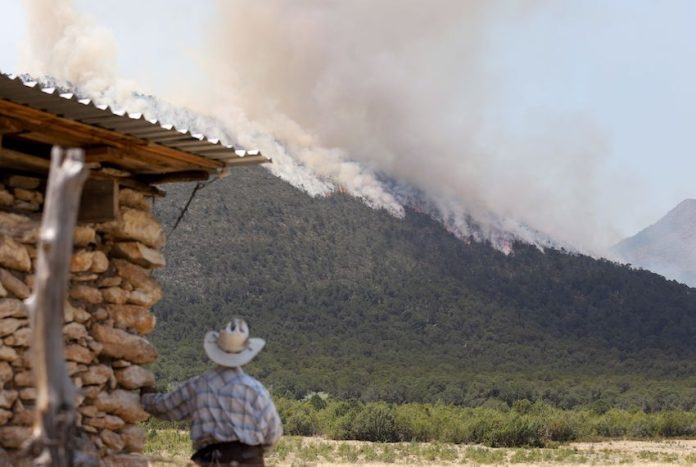Mexico’s National Forestry Commission (Conafor) is bracing for an active and potentially explosive wildfire season in 2024.
In the first 18 days of the year, there were already 55 forest fires reported around the country — as many as there were for all of 2020. And those 2020 fires consumed only 421 hectares (1,040 acres) all year compared to the 643 hectares that have already been consumed in only three weeks of 2024, according to data collected by Conafor.

“We are seeing [this happen] because of how dry the mountains are, and the winds that are literally developing the fires,” Arturo Galindo Cabada, coordinator of Civil Protection in the northern state of Durango, told newspaper La Jornada.
The National Meteorological Service (SMN) reported that 55% of Mexico was in drought conditions at the end of 2023. Last year, the Defense Ministry (Sedena) and the National Water Commission (Conagua) even worked on “seeding” clouds near Mexico City in an attempt to create rain.
Durango is one of the states where dry and windy conditions prevail. Winds of up to 90 kilometers per hour were cited as a cause in some of the five forest fires that Galindo said Durango experienced in the first three weeks of January. Those conflagrations did force some parks to be closed, but overall the effects were minimal, Galindo pointed out.
In a similar time span, from Jan. 1-18, there were nine forest fires in México state, eight in Veracruz and seven in Jalisco, according to Conafor data. The January fires “are getting ahead of us,” Galindo said. “Last year, for example, they started at the end of February.”

Last year saw 138 wildfires throughout Mexico that consumed 3,111 hectares (7,688 acres). In the past decade, only 2021 and 2017 had more wildfires, with 176 and 153, respectively. Jorge Israel García Ochoa, Minister of Environment and Territorial Development in Jalisco, attributed the early outburst of wildfires to the long duration of the dry season, even though there was above-average rainfall in the Guadalajara metro area at the end of 2023.
However, “the cold of January is creating a large amount of dry grass, because the cold affects primary vegetation, such as grasses and shrubs,” Valentina Davydova, researcher in the Environmental Sciences Department at the University of Guadalajara, told newspaper El Informador. “Starting in February, high temperatures begin to develop, especially in urban and suburban areas,” she added. “In February and March, we will have a high probability of forest fires.”
Authorities do add a caveat: Many of the wildfires are caused by human recklessness or arson, not necessarily climatic conditions. That’s not to say that climate patterns such as El Niño — a major cause of the decreased precipitation in Mexico last year — don’t play a role.
“If the El Niño phenomenon continues, we will have a prolonged spring, a late start to the rainy season and poor rainfall development within the Central-Western region of our country,” Davydova stressed. Mexico “will continue with drought problems and an increase in the probability of forest fires, and their presence can last throughout the spring period until the month of June.”
With reports from La Jornada, Informador and Meteored
